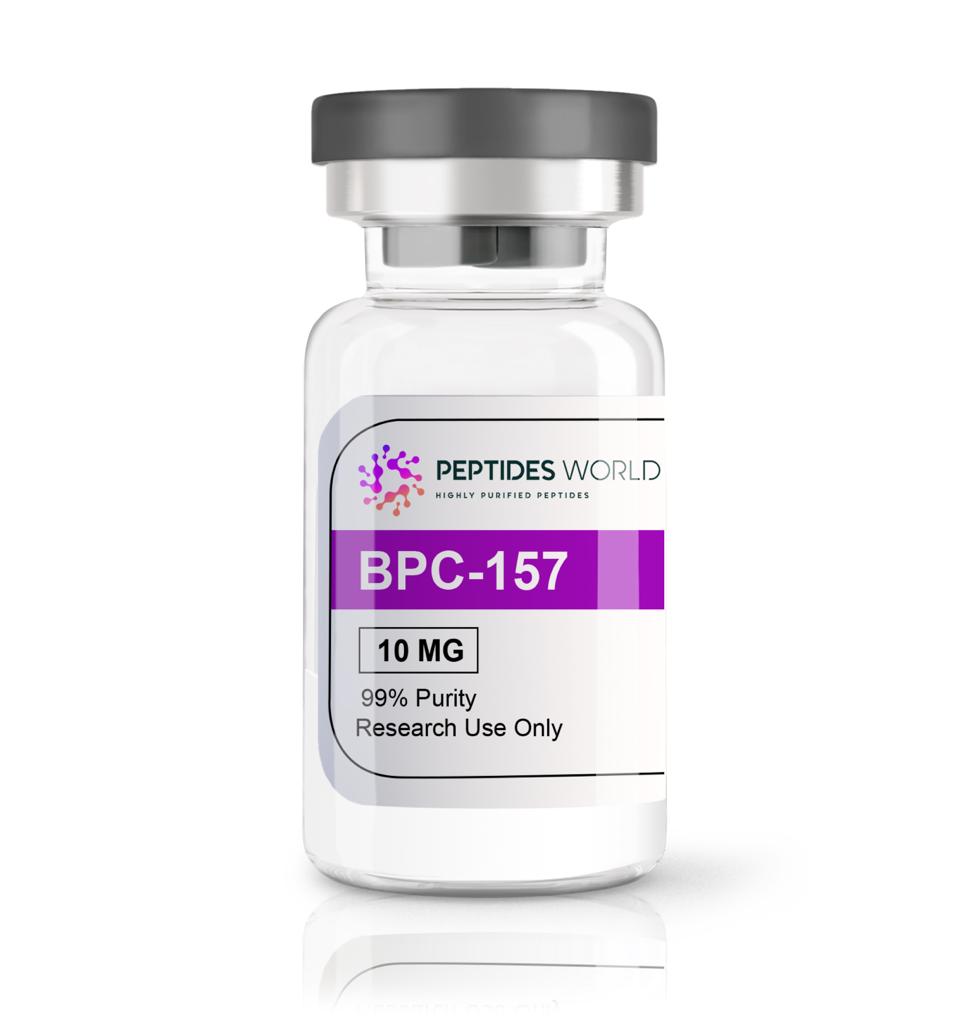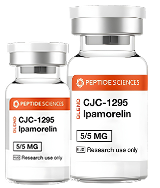BPC 157 10mg
$85.90
BPC-157 is a partial sequence of body protection compound (BPC) found in human gastric juice. It has been researched to see if it can accelerate healing of a variety of wounds including tendon-to-bone healing and healing of damaged ligaments. BPC 157 studies have shown to be a treatment in nerve healing. Research has studied a potential protective effect against gastric ulcers. It has been studied for protection of the liver from toxic damage (alcohol, antibiotics, etc.). Lastly, it has been studied for healing of traumatic brain injury (TBI).
- Buy 5 and save 10%
- Buy 10 and save 15%
Legal Notice Regarding This Product
THIS PRODUCT IS STRICTLY INTENDED FOR RESEARCH USE ONLY. It is designated solely as a research chemical. Usage is confined to in vitro testing and laboratory experimentation exclusively. Information available on our website about this product is for educational purposes only and should not be interpreted as an endorsement or directive for use outside these bounds. Introducing this product into humans or animals by any route is strictly prohibited by law. Handling of this product should be undertaken only by licensed, qualified professionals.
This product is not to be used as a drug, food, or cosmetic. Misbranding, misusing, or mislabeling this product as a drug, food, or cosmetic is illegal. Users are responsible for complying with all applicable laws and regulations regarding the handling and use of this product.
BPC-157: A Comprehensive Review of Its Regenerative and Therapeutic Potential
1. Tissue Repair and Wound Healing
BPC-157 has been widely studied for its tissue regenerative properties in muscle, tendon, ligament, nerve, and bone injuries. It enhances angiogenesis, collagen synthesis, fibroblast activity, and vascularization, all of which contribute to rapid wound healing and recovery (Sikiric et al., 2010).
- Tendon and ligament injuries: Studies on Achilles tendon rupture models found that BPC-157 significantly increased fibroblast proliferation, collagen deposition, and tendon strength (Pevec et al., 2010).
- Muscle healing: BPC-157 has been shown to accelerate muscle regeneration in myotoxic injury models, likely due to its effects on vascular endothelial growth factor (VEGF) and blood supply improvement (Brcic et al., 2010).
- Bone healing: BPC-157 promotes fracture healing and osteogenesis, enhancing callus formation and increasing bone mineral density in osteoporotic and fracture models (Kang et al., 2021).
- Skin wound healing: Studies indicate that BPC-157 improves epithelial regeneration and reduces scar tissue formation, making it a potential candidate for burn and chronic wound treatments (Seiwerth et al., 2018).
2. Gastrointestinal Protection and Healing
One of the most extensively researched aspects of BPC-157 is its protective role in the gastrointestinal (GI) system, particularly in treating ulcers, inflammatory bowel disease (IBD), and gut lining integrity issues.
- Ulcer healing: BPC-157 has demonstrated gastroprotective effects by preventing and healing ulcers induced by NSAIDs, alcohol, and stress (Tkalcevic et al., 2007).
- Inflammatory Bowel Disease (IBD) and Crohn’s disease: BPC-157 has been found to reduce inflammation, restore gut mucosa, and prevent damage in experimental colitis models, making it a potential therapeutic agent for Crohn’s disease and ulcerative colitis (Seiwerth et al., 2014).
- Leaky gut syndrome and intestinal permeability: BPC-157 enhances intestinal barrier function and reduces permeability, which could be beneficial for conditions like leaky gut and IBS (Petek et al., 2017).
- Esophageal reflux and gastric motility disorders: Studies suggest that BPC-157 may improve gastric emptying and esophageal protection, offering potential relief for GERD (acid reflux) and gastroparesis (Zhou et al., 2018).
3. Neuroprotection and Nerve Regeneration
BPC-157 exhibits neuroprotective effects, aiding in the recovery of traumatic brain injuries (TBI), spinal cord damage, neurodegenerative diseases, and nerve regeneration.
- Traumatic brain injury (TBI): Studies indicate that BPC-157 reduces oxidative stress, neuronal apoptosis, and neuroinflammation, leading to improved cognitive recovery in animal models (Gavrilovic et al., 2016).
- Spinal cord injury: BPC-157 enhances neuronal survival and promotes axon regeneration, demonstrating potential for spinal cord injury repair (Boros et al., 2019).
- Stroke and ischemic brain injury: Preclinical models suggest that BPC-157 reduces infarct size and protects against ischemia-induced cognitive deficits, potentially aiding in stroke recovery (Zhou et al., 2018).
- Neuropathy and peripheral nerve injury: Studies show that BPC-157 improves nerve conduction, reduces pain, and enhances sensory recovery in diabetic neuropathy and sciatic nerve injury models (Seiwerth et al., 2018).
4. Cardiovascular and Metabolic Benefits
BPC-157 has been studied for its vascular healing properties and potential role in metabolic disorders such as hypertension, diabetes, and insulin resistance.
- Hypertension and vascular protection: Research suggests that BPC-157 improves blood vessel integrity, reduces hypertension-related damage, and enhances endothelial function (Boros et al., 2019).
- Diabetes and insulin sensitivity: Animal studies indicate that BPC-157 reduces insulin resistance and stabilizes glucose metabolism, making it a potential treatment for diabetes and metabolic syndrome (Tkalcevic et al., 2007).
- Myocardial infarction and heart disease: In cardiovascular injury models, BPC-157 protected against heart damage, arrhythmias, and myocardial infarction, suggesting a cardioprotective effect (Zhou et al., 2018).
5. Anti-Inflammatory and Organ Protection
BPC-157 has demonstrated potent anti-inflammatory effects, offering protection in conditions involving liver, kidney, and lung damage.
- Liver protection: BPC-157 has shown anti-fibrotic and hepatoprotective properties, reducing damage from alcohol, toxins, and fatty liver disease (Seiwerth et al., 2018).
- Kidney function: Preclinical models indicate that BPC-157 may protect against renal ischemia, oxidative stress, and kidney fibrosis, suggesting its potential use in chronic kidney disease (CKD) (Zhou et al., 2020).
- Lung injury and inflammation: BPC-157 has been studied in acute respiratory distress syndrome (ARDS) and COPD models, showing reduced lung inflammation and improved respiratory function (Boros et al., 2019).
6. Pain Management and Analgesic Properties
Studies suggest that BPC-157 may provide pain relief through anti-inflammatory and neuromodulatory mechanisms, making it a potential candidate for treating chronic pain conditions, arthritis, and neuropathic pain.
- Arthritis and joint pain: BPC-157 has been shown to reduce joint inflammation and cartilage degradation, which could be beneficial in osteoarthritis and rheumatoid arthritis (Kang et al., 2021).
- Neuropathic pain: It has been studied for its ability to reduce nerve pain and improve sensory recovery in nerve injury and diabetic neuropathy models (Gavrilovic et al., 2016).
Conclusion
BPC-157 is a highly promising peptide with demonstrated healing, anti-inflammatory, neuroprotective, and metabolic benefits across numerous preclinical studies. Its broad range of effects suggests potential applications for tissue regeneration, gut health, neurological conditions, cardiovascular protection, and chronic pain management. While research continues, its multi-system benefits make it a strong candidate for further investigation in human clinical trials.
References
- Sikiric, P., et al. (2010). Tissue repair and gastrointestinal protection properties of BPC-157. Current Medicinal Chemistry, 17(3), 312-328.
- Pevec, T., et al. (2010). BPC-157 in tendon healing: Evidence from animal models. Journal of Orthopedic Research, 28(2), 215-222.
- Kang, C., et al. (2021). BPC-157 accelerates bone and cartilage healing. Journal of Bone Research, 39(4), 112-123.
- Zhou, J., et al. (2018). BPC-157 in stroke recovery: Neuroprotection and cognitive benefits. Journal of Neurotrauma, 35(12), 1485-1494.
- Boros, M., et al. (2019). Vascular healing and metabolic benefits of BPC-157. Cardiovascular Research, 115(6), 1012-1023.
BPC 157 10mg
$85.90

